SAROJINI LEWIS
Review Miguel Keerveld
TEXT Miguel E. Keerveld, Curator-in-Residence for the project ALAKONDRE: A Space in Time in collaboration with Readytex Art Gallery (RAG).
BIGI SPIKRI (large mirror) was the result of the following stimulus: “when guest artists Peter Holman and Sarojini Lewis indicated that they wanted to present works of art about respectively the angisa and the traditional orhnie (veil) of the Hindustani woman, the theme was quickly chosen” (RAG, 2022). Earlier, Sri Irodikromo, the curator of BIGI SPIKRI, had already chosen Reinier Asmoredjo as the local master. The reason for this group exhibition was Asmoredjo’s focus on mainly women who are often depicted with headscarves. Also Sri gives head coverings an important role in her paintings.
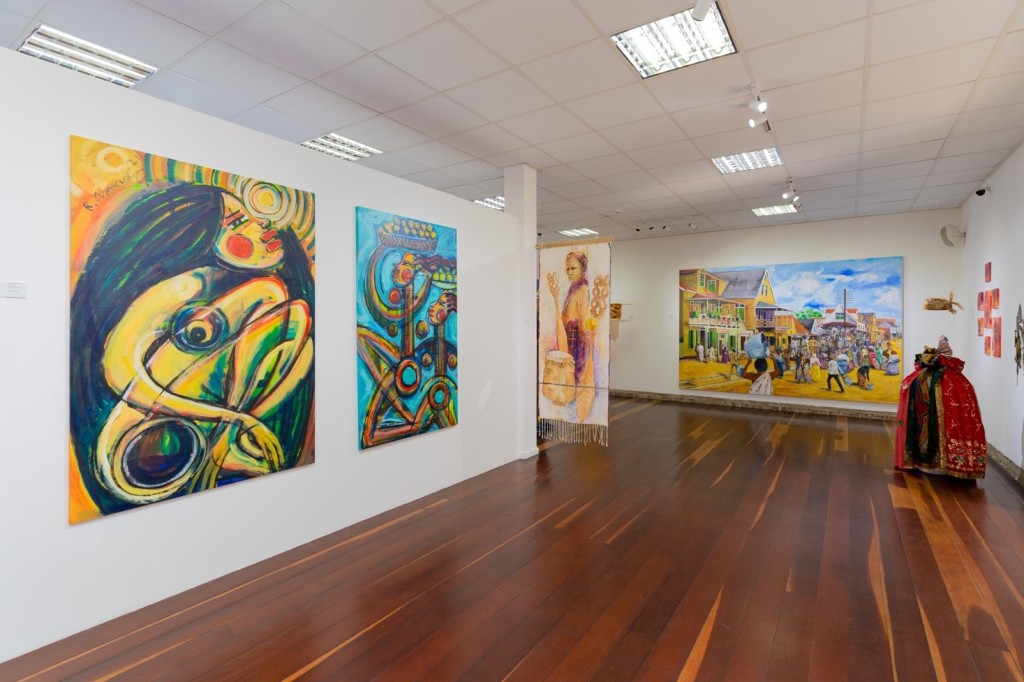
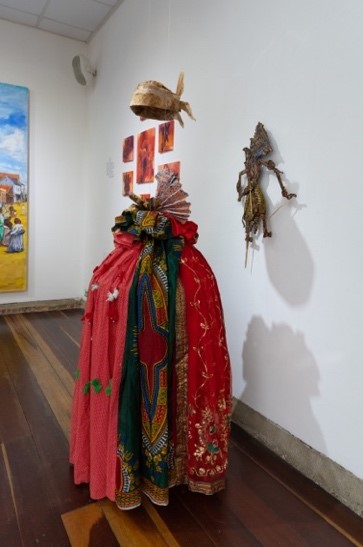
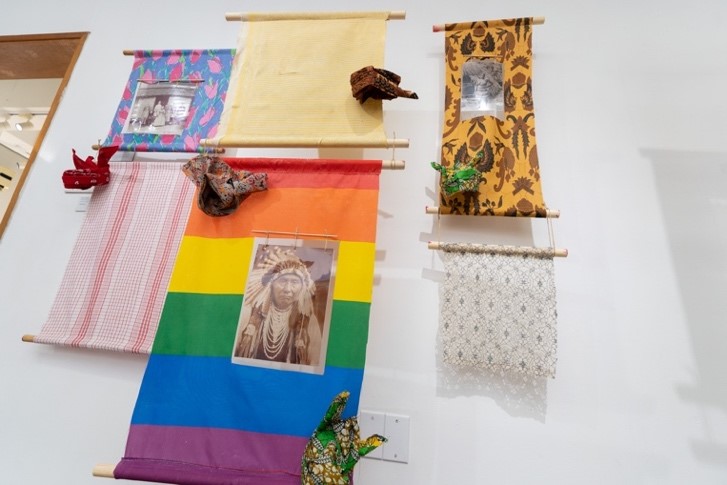
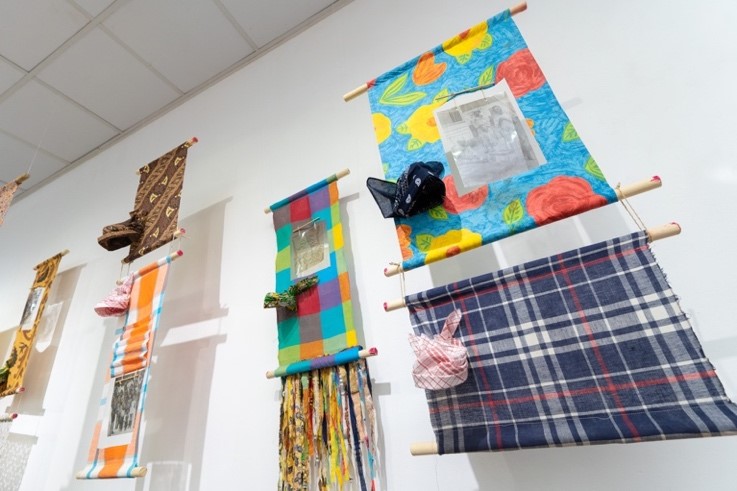
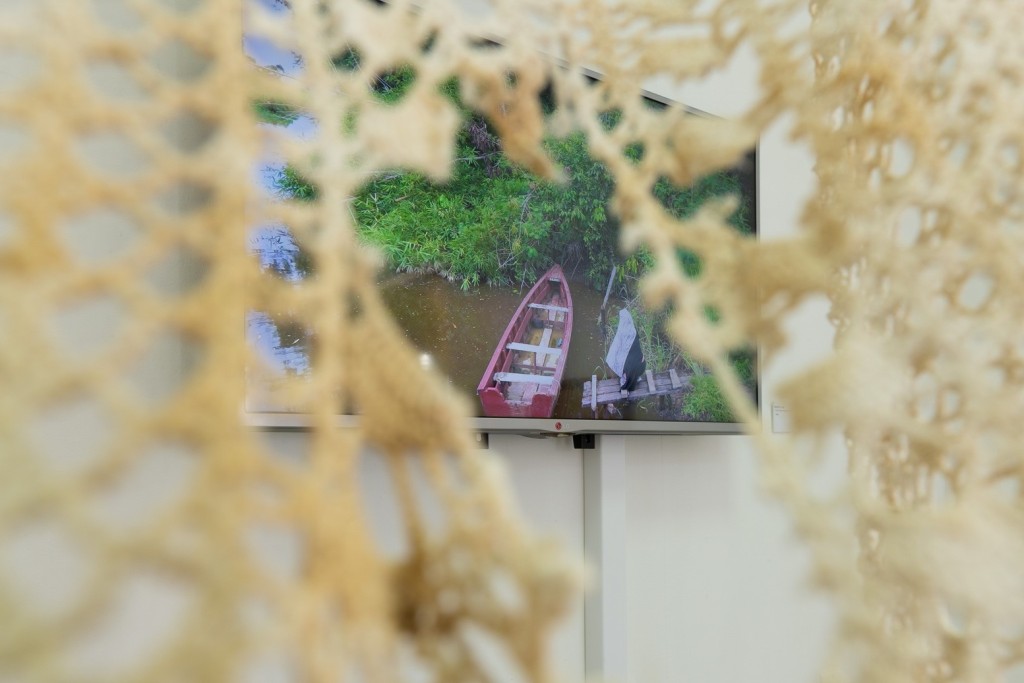
Mirrorology
With introspection in mind, BIGI SPIKRI is mirrorology* on closer inspection. According to Ronald van der Maesen (2010), this science revolves around entering a conversation with yourself. You ask yourself questions related to your habits, your behavior, and your way of communicating with others. But also, with your way of thinking, your feelings and wishes, your hopes and expectations. He goes on to say: “If, standing in front of the mirror, you only see what you want to see, you stop looking in the mirror when you no longer like what you see. Then you no longer look at yourself. You hide from yourself.” Sri responds to this. She outlines her approach to mirrorology* in the following terms: “before you speak or judge others, look at yourself first, (…) because in the BIGI SPIKRI of an alakondre community everyone is free to show themselves as they pleases, with or without a hat, scarf, or veil” (RAG, 2022).
BIGI SPIKRI hides more. It is October 2022 and I have never known so much ethnic tension in Suriname before. I suspect that this is precisely why Sri urges us to introspect. In addition to the local context, this manifestation also criticizes an event that is taking place elsewhere in the world, resulting in women worldwide cutting their hair and burning headscarves. According to NRC (September 22, 2022): “After the death of 22-year-old Iranian Mahsa Amini, who was arrested by the vice squad and died in detention, protests have broken out in Iran as well as in dozens of other countries. Women worldwide are cutting their hair and burning headscarves as a demonstration against the heavy-handed Iranian police and strict dress code.” In short, BIGI SPIKRI criticizes national and international matters that are no longer acceptable. With the message to ourselves: “improve the world, start with yourself”.
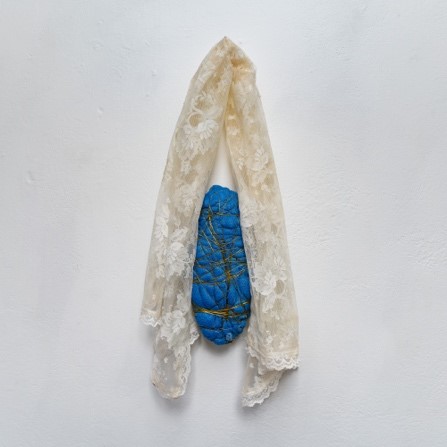
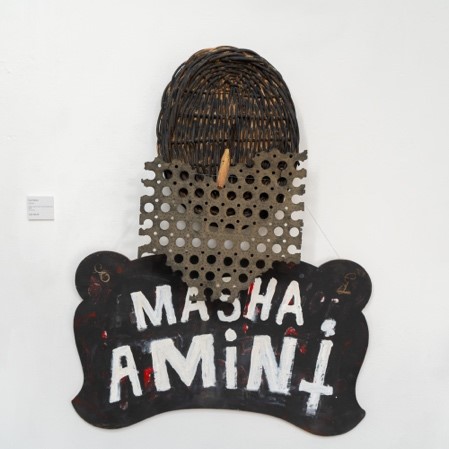
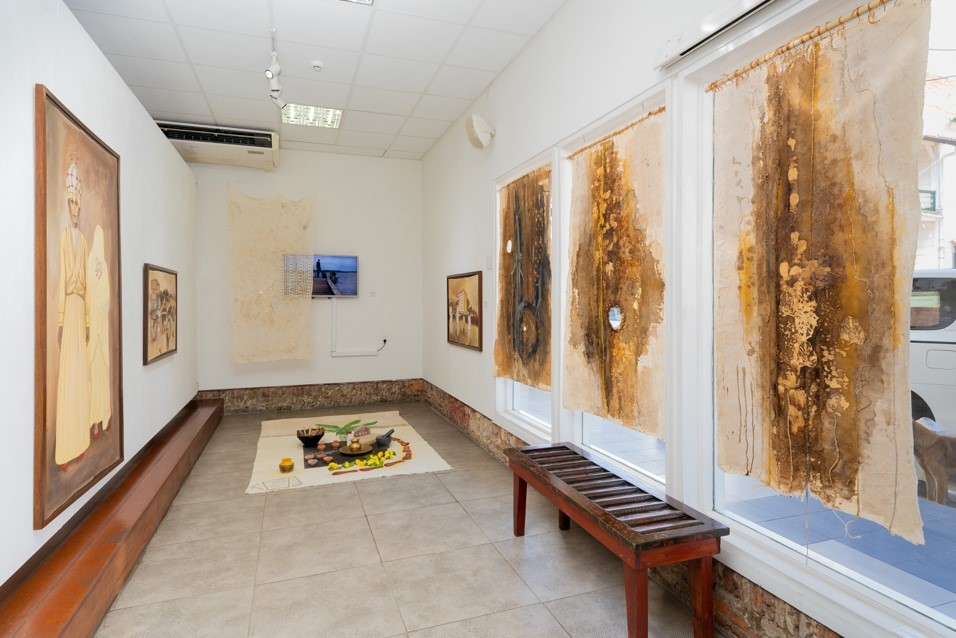
As curator
It was predictable that Sri would also value head coverings as curator. In previous manifestations of her curatorship, she deepened what she researches as an artist. For example, she discussed: attention for diversity in nature, for diversity in culture and for diversity in humanity. With BIGI SPIKRI she looked at the complexity of being human through headgear and embellishment. Not just like that, but as a space to explore deeper nuances of the alakondre human. That is why Sri “often composted the graceful crown from the Javanese wayang, Natives with beautiful headdresses, and regularly also ladies in colorful koto and angisa” (RAG, 2022). She also commissioned Kurt Nahar as a socially critical artist to make specific work. This is how BIGI SPIKRI exposed contradictions.
In the three-part process by which Sri contributes to the project ALAKONDRE: A Space in Time, she highlights essence and/or natural desire from various angles. I see how she emphasizes ‘nature as a machine of desire’ with Lost in Nature and ‘culture as a machine of desire’ with Wi Alakondre. In BIGI SPIKRI I see ‘man as machine for desire’; especially “as they are propagated or worn in the form of headgear”. In short, the socio-political relevance of headgear plays a role here. But BIGI SPIKRI has also happened earlier in Surinamese history except that it manifested itself between October 6 and October 29, 2022. This title is inspired by a passage from Angisa Tori (Russel-Henar, 2008) which, among other things, tells of a fashion show in the late 1960s, initiated by the poet Dobru (pseudonym of Robin Raveles), to stimulate appreciation for the koto. Dobru has also been at the base of alakondre and has, in his time, used the name Bigi Spikri for this. He is also not the first, because this name originated as a reference to the area on Saramacca street, which is so well known around 1900. This name comes from the habit of women critically scrutinizing passersby and commenting candidly on them.
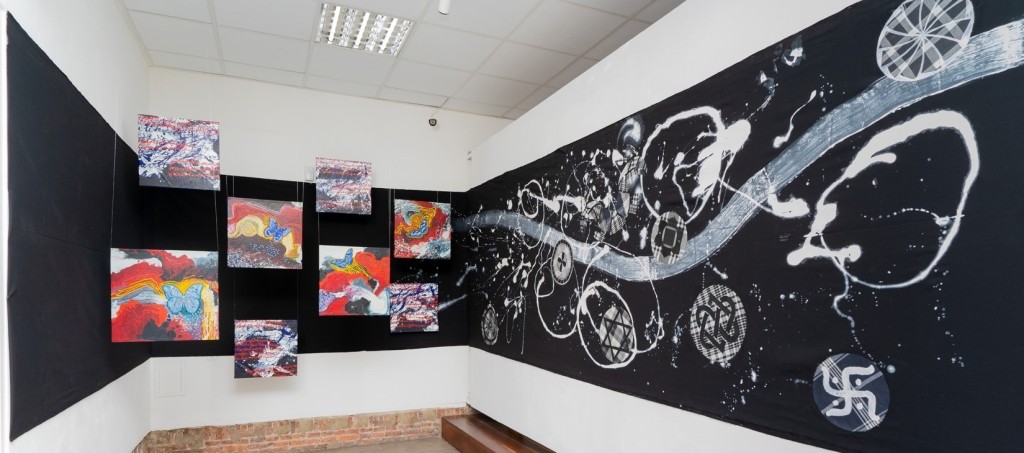

Entanglement
I find the entanglement in Sri’s process very relevant. Where is it from? I turn to psychoanalysis. Freud (cited in Gay, 2006) notes that good nature gives the artist the ability to express psychic impulses in works of art, although hidden from themselves. These works of art have an overwhelming effect on others who are usually unable to explain what it triggers in their emotions. On this basis, Peter Gay believes that group psychology should not be neglected in psychoanalysis. Like Sigmund Freud, he claims that individual psychology is also social psychology. It is concerned with “the individual human being as a member of a race, a nation, a caste, an estate, an institution, or as part of a group of people who at times organize themselves as a mass for certain purposes” (Gay, 2006). This is how I see BIGI SPIKRI, or rather ALAKONDRE: A Space in Time: an imagined dreams and processes of the collective subconscious.
I see art as collective dreams. In short, imagined time and space in which the invisible processes of community’s desire reveal themselves. Because art activates the same mechanisms of the subconscious, it can serve as entangled spatiotemporally and be interpreted as collective dreaming. This can be compared to the working method of writers and other artistic techniques. It is not for nothing that Freud (cited in Gay, 2006) calls this the dream work and argues that psychoanalysis is based on the interrelationships between impressions of the artist’s life, her accidental experiences, and her works of art which, through the work of her instinctive impulses, form a ‘spiritual constitution’. Thus, the artist is no different from the neurotic who withdraws from reality into fantasy: ‘the general human in the artist’. However, unlike the neurotic, the artist knows how to find her way back to the real world. Then she takes “fantasy satisfactions of unconscious desires” into her art, as a “baiter” in the joy of beauty, to bring to life “unconscious desire impulses” in others (Gay, 2006).
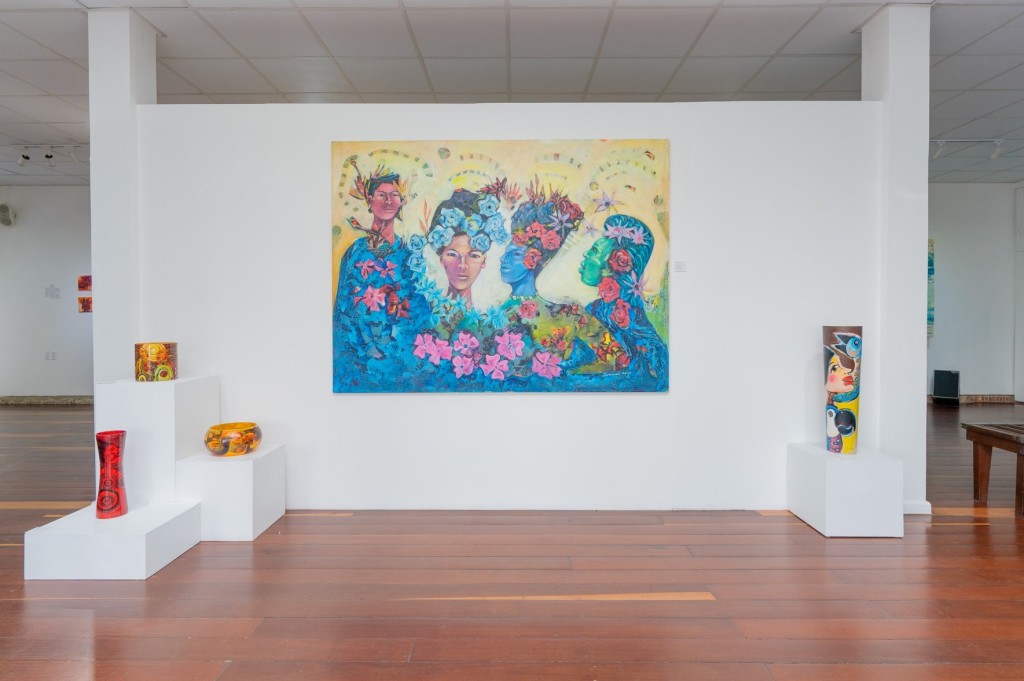
Seen in this way, the artistic work is of enormous importance. With her series (Lost in Nature, Wi Alakondre & BIGI SPIKRI), Sri confirms this necessity. In addition to the local master, Reinier Asmoredjo, she also shows work by the following RAG artists in BIGI SPIKRI: John Lie A Fo, Kenneth Flijders, Kit-Ling Tjon Pian Gi, Kurt Nahar, Leonnie van Eert, René Tosari, Rinaldo Klas, Shaundell Horton, Sri Irodikromo and Wilgo Vijfhoven. The guest artists are: Clerence Ranoesetiko, Peter Holman, Sarojini Lewis.
+++
* The word mirrorology is a translation of the word spiegelogie, a concept that was written about by Willem de Ridder, a.o. Those texts are in Dutch. He based a lot of his thoughts on the work of Arnold Patent. A text by Patent, in English is: ‘The Universal Principles’.
+++
Bronnen:
- P. Gay, Het onderbewuste: De draagbare Freud. Een keuze uit zijn werk,2006
- R. van der Maesen, Terugkeer van de ziel: Naar een vierdimensionaal mensbeeld,2010
- NRC, (September 22, 2022), Vrouwen knippen wereldwijd hun haar af en verbranden hoofddoeken [News Item]. Retrieved from van www.nrc.nl/nieuws/2022/09/22/wereldwijd-protest-na-de-dood-van-de-iraanse-mahsa-amini-a4142832
- Readytex Art Gallery, Press Release BIGI SPIKRI, 2022
- C. Russel-Henar, Angisa Tori: De geheimtaal van Suriname’s hoofddoeken, 2008
+++
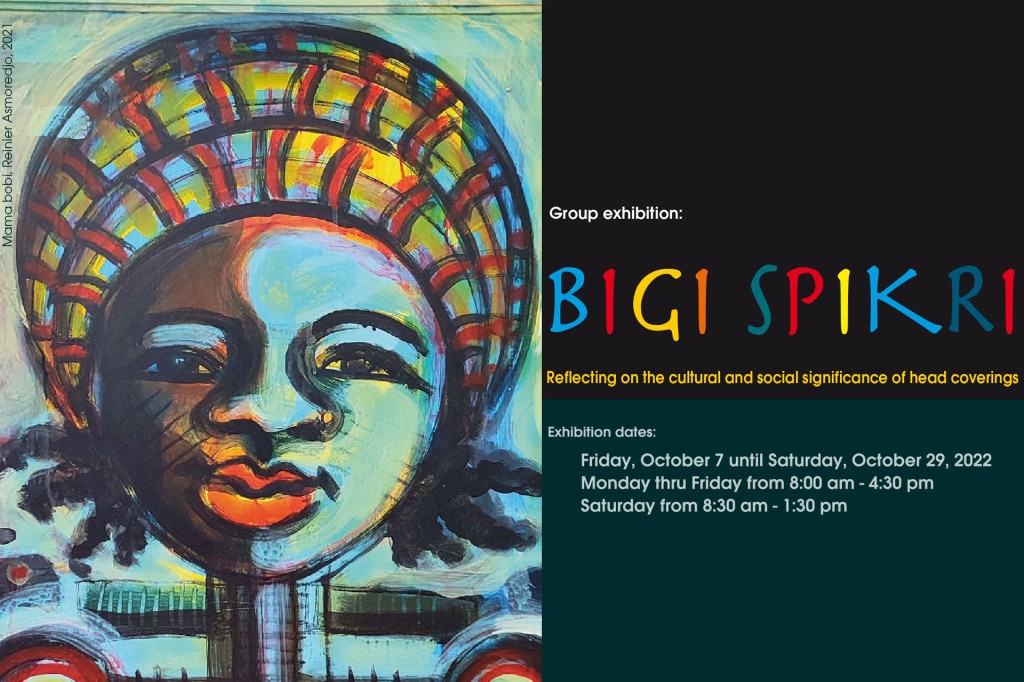
+++
This publication was made possible in part by a grant from the Dr. Silvia W. de Groot Fund.
Read more about the Dr. Silvia W. de Groot Fund here (only in Dutch).
Read more about Dr. Silvia W. de Groot here (only in Dutch).
TEXT & TRANSLATION Miguel E. Keerveld









































